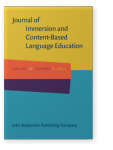Vol. 10:1 (2022) ► pp.5–32
Vol. 10:1 (2022) ► pp.5–32
Effects of content-based instruction (CBI) on EFL secondary school learners’ writing
Linguistic and functional aspects
To investigate the impact of meaning-focused content-based instruction (CBI) and language-focused non-CBI, both dealing with compare/contrast language, this study compared Japanese secondary school students’ compare/contrast writing on two topics (i.e., a power generation topic aligned to the CBI and a new topic) in pre-and post-tests. Their writing was analyzed in terms of complexity, accuracy, fluency, and functional adequacy. The results show that the CBI group improved both linguistic and functional aspects of the power generation topic, as well as two functional aspects of the new topic. In contrast, the non-CBI group showed two linguistic changes in the power generation topic, and three linguistic and two functional changes in the general topic writing. Therefore, CBI may not only serve to improve linguistic and functional aspects on the same topic writing but also might draw writers’ attention to functional aspects in a new topic.
Article outline
- 1.Introduction
- 2.Previous studies
- 2.1Theoretical underpinnings of CBI
- 2.2Writing assessment measures
- 2.3CBI impact on L2 writing skills
- 2.4Impact of content provision as a task variable on L2 writing performance
- 3.Methods
- 3.1Participants
- 3.2CBI and non-CBI lessons
- 3.3Measures and analysis
- 3.3.1Writing data
- 3.3.2Data analysis
- 4.Results
- 4.1Power generation topic writing
- 4.2General topic writing
- 5.Discussion
- 5.1Power generation topic writing
- 5.2General topic writing
- 6.Conclusions and implications
-
References
